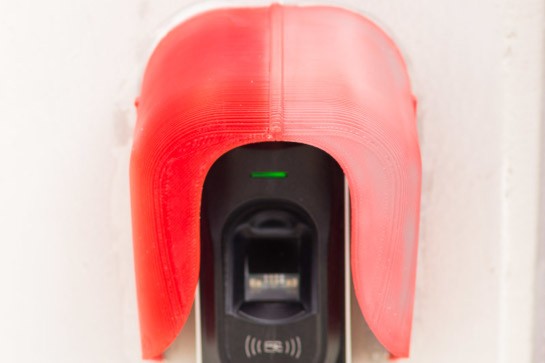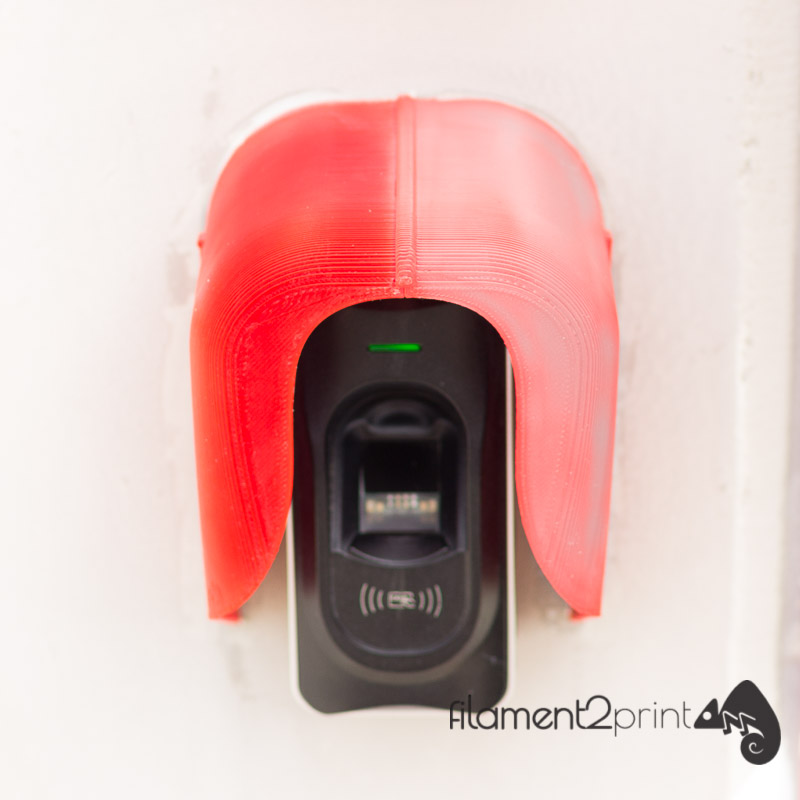
The ASA is an amorphous thermoplastic terpolymer material similar to ABS created in 1970 by the manufacturer BASF under the trade name Luran S. The difference between these two materials at the structural level is that the ASA uses an acrylic elastomer and the ABS an elastomer of butadiene.
The ASA is referred to as engineering plastics because it maintains its appearance and resistance to impact even after being exposed to long periods of time in the open air, rain, cold and salt water of the sea. That is why it's a material used in many products that we see and use in our daily life: parts of houses (roof coverings), electrical installations (junction boxes), auto parts (front grilles), toys, structural elements for outdoors (pipes and construction profiles) and many more.
Application of ASA filament in 3D printing
ASA (Acrylonitrile Styrene Acrylate) is an increasingly common material among users of 3D FDM/FFF printers thanks to being developed to be an "advanced ABS". Every user knows that the PLA is the most consumed, and that ABS is the most used material in 3D printing to make resistant and functional elements, from simple pieces to pieces that will be subjected to mechanical stress, but both have some disadvantage; ABS is prone to the warping effect when carrying out mostly large pieces, something that is solved with the use of 3D printers with a temperature controlled printing chamber such as the 3NTR A4 (industrial 3D printer). Another problem that presents the ABS is the yellowing or discoloration that originates when being in contact with climatological atmospheres. For example, if you make a decorative piece for your garden with ABS, after a year it's likely that the color and surface appearance have worsened.

Image 1: On the left ASA, on the right ABS after a year and a half abroad
All the problems mentioned above are solved with the appearance of the ASA. This material is very resistant to UV rays and long exposure in adverse weather conditions, which is just what ABS lacks to be a material applicable in all fields of the industry. By presenting a high dimensional stability (mechanical resistance), a high glass transition temperature and good chemical resistance, the ASA is a material widely used in the main sectors of industry, such as in the automotive sector. The older we must add that the ASA is slightly easier to print than ABS, especially with large pieces.
Recommendations on the use of ASA filaments
For users who usually use ABS, using ASA will be an easy task and will obtain pieces more resistant to damage caused by sun and water. For those who do not have that training or experience with ABS they must follow a series of simple recommendations to achieve successful printing with ASA:
- Avoid drafts: Like many materials of 3D printing, the ASA is sensitive to sudden changes in temperature during 3D printing, it being very beneficial to have a 3D printer with a closed casing or a room free of drafts.
- Use Kapton tape: To improve adhesion to the printing base it's recommended to use Kapton Tape (or BuildTak), increasing its action with DimaFix on it.
- Use layer fan to minimum: Once achieved a good adhesion we will focus on the quality of printing and avoid problems such as cracking or overheating. So that these problems do not appear it's recommended to use the layer fan at the minimum possible speed (10-25 % of the total power). This helps the solidification of the material, avoiding overheated areas, but without producing a sudden temperature change that causes cracking.
- Use HiPS as support material: As the ASA is a very versatile filament, there are cases where it is necessary to use a support material, HiPS. The HiPS is a material soluble D-Limonene, also widely used in combination with ABS. Following the similarity with ABS, the simplest and most used post-processing method is the smoothing of acetone, this method consists of introducing the piece in an acetone steam bath that softens and brightens the surface layer. A part can also be machined at medium-low speeds, glued and painted directly without the need for previous primers.
Conclusions
The ASA (Acrylonitrile Styrene Acrylate) is a thermoplastic that combines the mechanical robustness, the resistance to UV rays, the resistance to water with a great surface finish, which makes the filament ASA suitable to make final pieces in 3D for machinery or prototypes Durable for outdoor use in the open.













Bonjour, L'évolution de la composition des filaments est extrêmement intéressante. A mon niveau d'utilisation personnel pour la maquettes et la fabrication de petites pièces protos, j'ai testé plusieurs PLA et ABS. Je suis attentif sur la dangerosité des filaments et notamment très prudent lors de l'utilisation de l'ABS, ce qui devient une contrainte surtout en hiver lorsqu'il est plus compliqué d'aérer en laissant une fenêtre ouverte. La vulgarisation d'un produit ne signifie pas qu'il n'a pas d'impact sur la santé. L'ASA doit pouvoir m'intéresser, mais à condition de connaître les précautions d'utilisation et le niveau de dangerosité. Cordialement. Jack Gaudoux
L'ASA, qui est un dérivé de l'ABS, dégage également certaines fumées (nocives pour les expositions prolongées). Pour les modèles et les pièces résistant à des contraintes modérées, l'utilisation de PLA Premium ou du CPE HG100 est suffisante.
Quoi qu'il en soit, nous pouvons indiquer une solution pour personnaliser les modèles que vous souhaitez imprimer dans la section contact de notre site web.